Features of watering cabbage
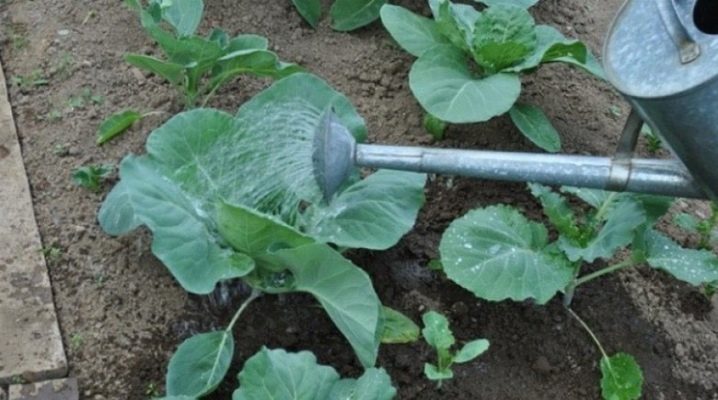
Proper watering is a prerequisite for agricultural technology when growing any vegetable, including cabbage. With proper irrigation, it does not crack, maintains an attractive appearance, and the palatability reaches its peak. To get a high-quality harvest, you need to know the features of watering each type of cabbage.
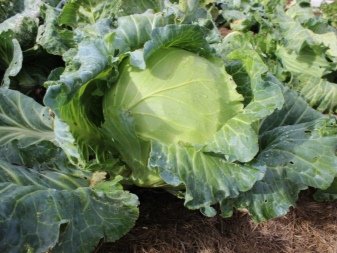
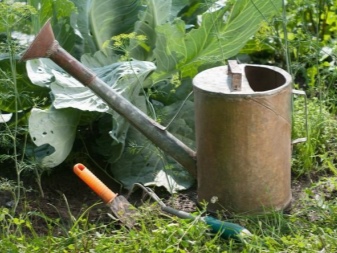
Water requirements
If the heads of cabbage grow outdoors, it is very important that the water for irrigation is at the correct temperature. In this case, irrigation is carried out only with settled and warm water. So the plant will feel comfortable and will delight you with a full harvest. Water is poured into special containers in which it is heated to the desired temperature, and all excess impurities sink to the bottom.
In order to heat up the liquid faster in autumn or spring, use a black container, which attracts the sun's rays. The recommended air temperature ranges from 18 to 23 degrees Celsius with a plus sign. Water with temperatures below 12 degrees will negatively affect all varieties of white cabbage.
When asked whether it is possible to water vegetables with cold water from a hose, experts answer negatively. Low temperatures are detrimental to the plant.
For this reason, water from a well or well will not work. Cabbage loves water and regular irrigation, but only if it is carried out under certain conditions.

How often should you water?
This vegetable crop prefers constant watering, the frequency of which depends on weather conditions, soil composition, cabbage variety and other characteristics. For example, in hot weather, the frequency of irrigation is increased to maintain an optimal moisture level. Only with a sufficient volume of water will the heads of cabbage develop properly, and the harvest will turn out to be juicy and aromatic. This applies not only to white cabbage, but also to cauliflower. Only with a sufficient supply of water, this vegetable grows well and gains the required amount of juices.
The type of terrain directly affects the frequency of irrigation of cruciferous plants. If rainy weather is established in the region, constant watering is impractical. If the variety description indicates that the vegetable crop needs to be watered 2-3 times a week, then the frequency can be reduced to once a week. With constant rainfall, irrigation can be completely abandoned. In a hot season, water from the soil evaporates quickly, and the beds are moistened more often.

Immediately after transferring the seedlings to the open ground, they are watered every three days using 8 liters of liquid per square meter of the plot. After that, the plantation is irrigated 2 times a week, consuming 12 liters of water per square meter.
When growing early varieties of white cabbage, the most intensive watering is carried out in the first summer month. Late varieties are watered abundantly in August, at this time the process of formation of heads of cabbage takes place. Every day, cabbage is watered as it adapts to a new place. Moisture will contribute to quick adaptation and accelerated development of the root system.
Note: If the vegetable crop does not receive enough water, its growth will stop and cracks will appear on the surface.
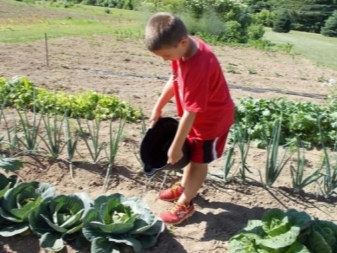

How to understand that there is not enough moisture in the soil?
It is possible to determine that there is not enough moisture in the soil by the state of the plant. The leaves lose their elasticity, begin to turn yellow and wither. The heads of cabbage look lethargic. The turgor of the plant will begin to return to normal after full watering. The leaves will begin to regain their former shape and color. If the soil lacks nutrients and trace elements, the cabbage will also look sluggish. Heads of cabbage decrease in size and show other signs of deterioration in appearance.
When restoring the optimum moisture level in the soil, it is important to avoid waterlogging. Otherwise, instead of restoring, the plant will begin to darken, and the root system will rot.
Cultivating cabbage necessarily includes preparing soil that will allow air to pass through, nourish the plant with useful elements and help maintain the desired moisture level. The key to successful cultivation lies in the preparation of the correct soil mixture. It is customary to prepare the soil in the fall or early spring. The most common option is to mix one part of the humus and soil from the garden.
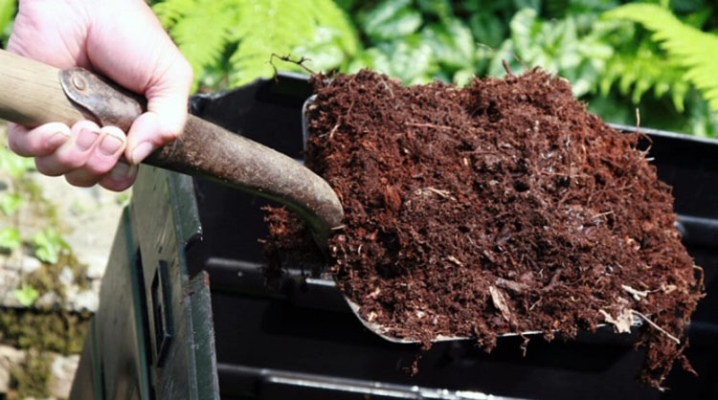
Each component has specific properties.
- The garden soil must be taken from the area where vegetables will grow. In this case, the seedlings will undergo transplanting painlessly and quickly get used to the new conditions. Garden land is needed precisely for adaptation.
- The sod layer is saturated with a large number of microorganisms. Soil collected near birches or in nettle thickets is ideal. Oak or willow soil will not work. A large amount of tannin components negatively affects the seedlings.
- The forest land is rich in nutrients and microorganisms.
- The sand is used as a baking powder. It is added no more than 10% of the total mass.
- Compost and humus contain a lot of nitrogen. This component is needed to build a thick and healthy green mass.
- Peat not only loosens the soil, but also helps to retain moisture inside, which is very important when growing cabbage in hot climates. Peat is acidic, so you need to reduce the acidity of the soil with lime or chalk.
The soil will notify about the lack of moisture by the state of the top layer. It cracks and becomes rough. At a certain depth, the earth does not dry out, especially if groundwater lies nearby. The process of evaporation of water in the soil occurs due to interaction with air currents. The process is also influenced by the properties of the soil.

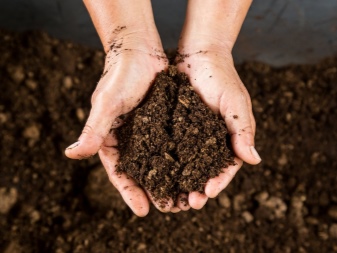
The ways
The moisture-loving vegetable crop is characterized by a shallow root system and a large evaporating leaf surface. In the process of setting a head of cabbage, the plant consumes most of the liquid. During this period, the soil moisture level should be at least 80%. Today, three main methods are used to irrigate the area where vegetables are cultivated.
Along furrows
Watering the cabbage in furrows through a hose should be done after the plants get used to the new area and are sufficiently strong. This option is not suitable for caring for young plants. In this case, root irrigation is chosen so that water does not fall on the leaves. Furrow irrigation is most often chosen for open ground.
The water pressure from the hose should be low. Watering from above can only be done in the evening or early in the morning to avoid sunburn.
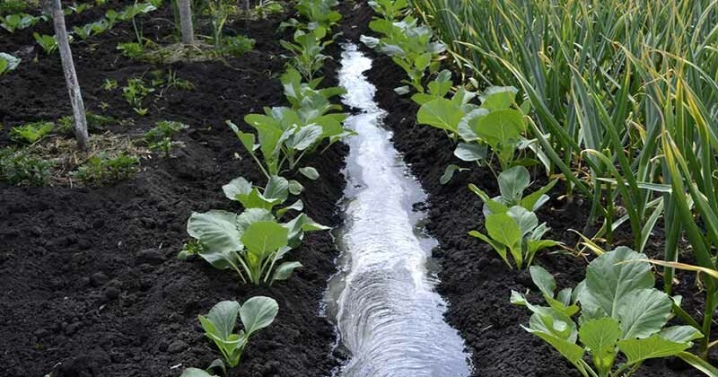
Sprinkling
Sprinkling method consists of watering over the leaf. This method is not used for young plants. The main advantage is that sprinkler irrigation is suitable for irrigating any type of soil.
The technology looks like this:
- first you need to install a special system, which consists of a portable type pipeline and various nozzles;
- the liquid is served in small portions, on a regular basis;
- under a certain pressure, the stream rushes up, and then falls down onto the garden, imitating rain;
- after watering, you need to loosen the top layer of the soil;
- hilling is carried out as needed.
The main disadvantage of this method is the constant loosening of the soil. Under the influence of water jets, the top layer is compacted and covered with a crust.
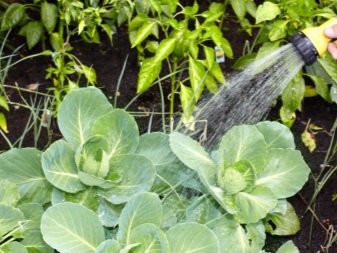
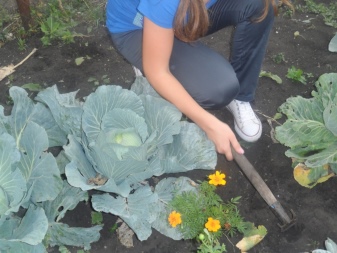
Drip irrigation
This option stands out from the rest by its high efficiency and convenience, but at the same time it is quite costly. Perfect for greenhouses. The drip irrigation system is installed in the case when it is not possible to devote much time to the garden or if you need to care for a large plot of land.
Method of application of the irrigation system:
- installation of a purchased or self-assembled structure consisting of a hose and pipes;
- system activation;
- water will flow in moderate portions directly to the roots of the plant.
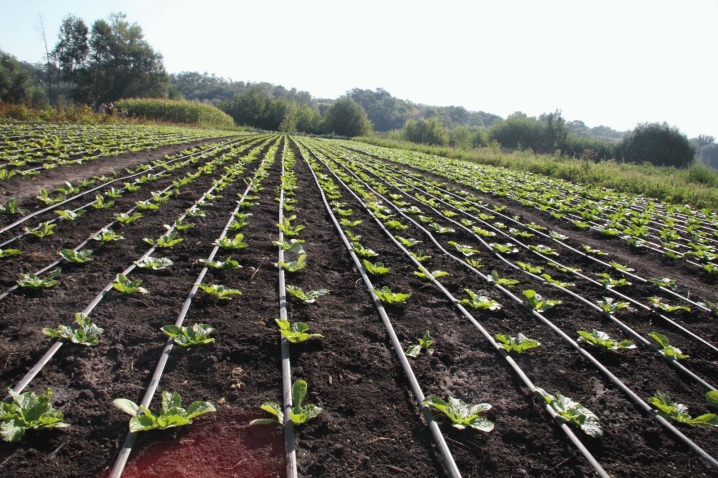
When choosing this option, you do not need to constantly loosen the ground. The drip system maintains a loose soil structure. For irrigation, you can use spring, rain or settled water from the tap. This installation will maintain a suitable moisture level without allowing the soil to dry out or moisture stagnation. Before the formation of heads of cabbage, the system turns on for 3 hours, in subsequent times, 2.5 hours of work is enough. The system is often used for the simultaneous irrigation and supply of the earth with useful substances and microelements.
Despite the numerous advantages, this method has a significant disadvantage - the installation cost.
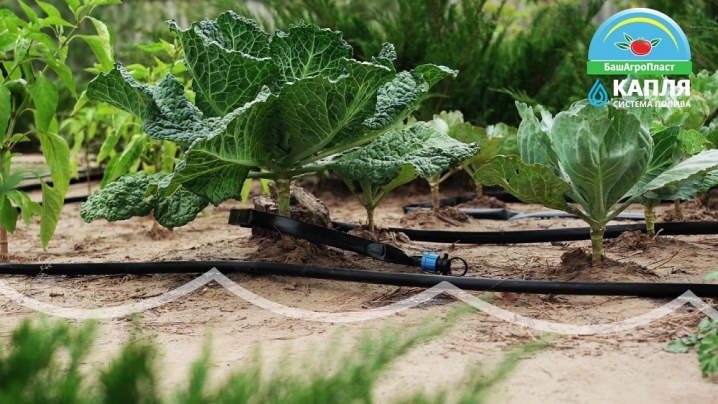
Watering nuances
There are certain norms for watering cabbage, which include recommendations from experienced gardeners:
- immediately after transferring the seedlings to the permanent growing site, you need to irrigate the plants every day, morning and evening. In the rainy season, the frequency of irrigation is reduced to once every 2-3 days;
- when watering at the root, 1 to 2 liters of liquid is consumed per head of cabbage;
- cover the cabbage in hot weather to reduce moisture evaporation;
- you need to periodically huddle the garden to better maintain moisture;
- if you moisturize the area correctly, the cabbage will not crack;
- after a long dry period, vegetables should not be heavily watered, otherwise they will begin to crack;
- stagnant dampness is dangerous not only for the quality of the crop, but also for the condition of the root system, vegetables should not be in water for more than 10 hours;
- a few hours after irrigation, it is necessary to loosen the soil around the plants, removing the dry crust on the surface;
- the frequency of irrigation is reduced after hilling.
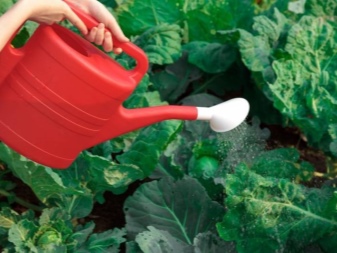
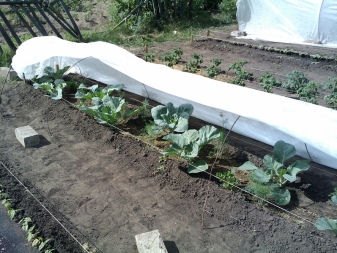
When drawing up an irrigation schedule, it is imperative to take into account the climatic conditions. As a rule, cabbage is watered more often in the southern regions than in the north and in other areas. Not only the number of irrigations changes, but also the amount of water used. There are certain standards - from 7 to 8 liters of water per plant or 50 liters per square meter of the garden (in hot and dry periods).
Despite the recommendations, it is important to monitor the soil moisture level and avoid waterlogging. Dampness affects not only the health of the vegetable, but also the keeping quality. The heads of cabbage become loose and lose their taste.
The time of day is also important when watering. During the day, you can water vegetables only if they are not exposed to direct sunlight. The recommended time is morning or evening.

In different periods
The frequency and intensity of watering should be adjusted taking into account the period of kaputa development. It is important to maintain the correct humidity level after planting seedlings in an open-air area. It is transferred to wet soil with a moisture content of at least 80. In order for the conditions to be suitable, the territory is preliminarily prepared. From 10 to 15 liters of water are consumed per square meter.
Then the cabbage is irrigated 2 days after transplanting. Now they use no more than 2-3 liters per plant (or 8 liters per square meter of the garden). Further, watering is carried out according to the following scheme - once every three days for a period of 2-3 weeks.
The second special period comes after the strengthening of the vegetable culture. Young, but already adapted plants are watered more often. About 2 times a week, heads of cabbage are watered using 12 liters of settled water per square meter (under stable weather conditions).In summer, the rules change, and so that vegetables do not dry out, 7-8 liters are spent on one plant.
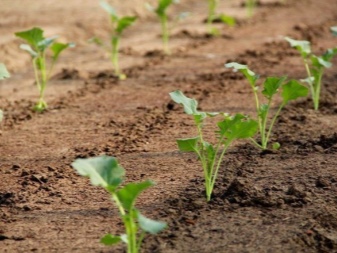
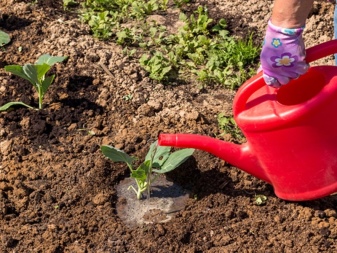
The third period is the process of setting the forks. It is during this period that the accelerated formation of the head of cabbage and the growth of leaves are observed. To maintain the optimal moisture level, at least 10 liters of liquid are spent on the plant. Also, experts have calculated the rate in accordance with the size of the site - 20-30 liters per square, and in the heat they consume from 40 to 50 liters. The amount of water used can be adjusted depending on the variety chosen and the growing method (open or closed ground).
Watering should be stopped several weeks (2-3) before harvesting. At this time, watering will only harm the plants and will have a bad effect on the appearance and shelf life of vegetables.
Water should be supplied to the roots of the plant regularly, regardless of the stage of development. Lack of moisture during the formation of heads of cabbage leads to the fact that the inner leaves begin to grow actively, and the leaves on the outside begin to break. The appearance of cracks in this case is inevitable.

Taking into account the type of cabbage
Another feature of cabbage watering is taking into account the type of vegetable. To obtain a rich harvest of white cabbage, you need a sufficient amount of liquid, but not only this species loves water.
- Broccoli also prefers regular irrigation with plenty of water. When growing it, they use 15 liters of water per week. The soil must be wet to a depth of at least 45 centimeters in order for the roots to receive enough moisture.
- When cultivating cauliflower, about 10 liters are consumed over 7 days. The volume may vary depending on weather conditions. If the heat has settled outside the window, the frequency of watering is increased up to 3-4 times a week.
- Systematic watering with equal intervals between treatments is important when growing Chinese cabbage. This species is early maturing. He prefers warm water that is supplied through a sprinkler system. This irrigation option will eliminate the cruciferous flea from the cabbage. These insects often attack vegetable crops.
- Another moisture-loving plant is Brussels sprouts. In the process of growth and during fruiting, the plantation is irrigated more than 10 times. Experienced gardeners recommend providing deep watering, consuming up to 8 liters of liquid per square meter of land. Consumption increases during the formation of vegetables and reaches 10-12 liters. Correct watering during the precipitation season.
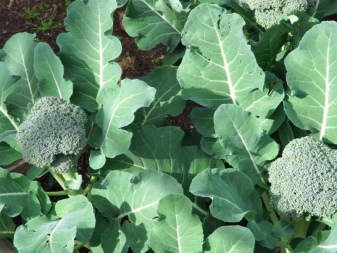
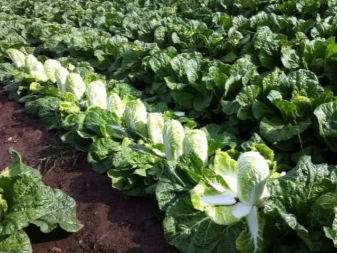
Each variety has its own ripening times, which also have an impact when calculating the frequency of watering.
- Early dates. This species needs watering more often than others, especially in early summer and throughout June. The maximum volume of water reaches 20-25 liters per square meter. It is important to keep the humidity around 80-90%. First, watering is carried out 48 hours after planting, and in the rest of the period, watering is carried out with an interval of 8-10 days.
- Late and mid-season cabbage varieties. With mass ripening of forks, varieties with medium and late ripening periods need regular watering. This period falls in August and humidity levels should be maintained between 75 and 80% during the last summer month. The frequency of watering is as follows: the first time the vegetables are irrigated on the day of planting, the second time - about a week later, 3 and 5 times - when rosettes are formed, 6-8 - when heads are formed, 9-10 - when the cabbage reaches the level of technical maturity.
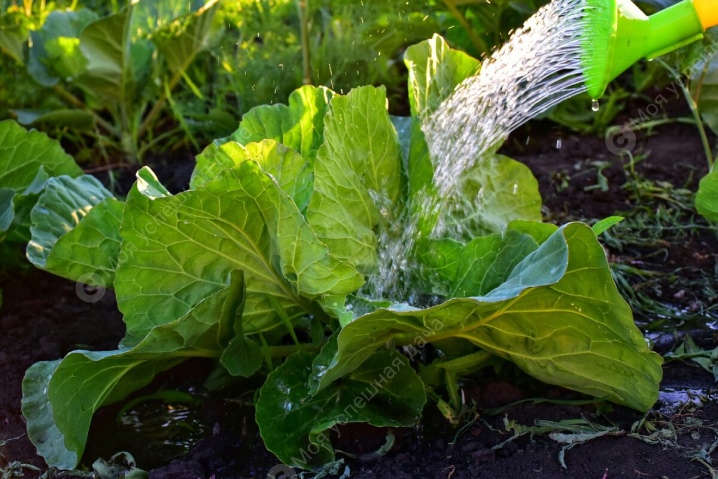
Combination with dressings
Irrigation is often combined with top dressing. Gardeners use both ready-made compositions and folk remedies. Each component has certain properties that must be taken into account.
Some fertilizer options are in high demand.
- Many gardeners use ammonia. In five liters of water, 50 milliliters of this component are dissolved, after which the seedlings are watered at the root. Such a solution will saturate the cabbage with a set of useful trace elements, and also perform the function of an insecticide.All dangerous pests will keep a great distance from the garden.
- The second most popular component is iodine. In the process of leaf formation and ripening of the vegetable, water mixed with iodine is used. To prepare a solution, 5 drops of this substance must be dissolved in 10 liters of liquid. The beds are cultivated after precipitation or irrigation.
- The combined composition demonstrates a good result. Making it yourself is easy. For a bucket of water, use 15 grams of potassium chloride and urea, as well as 23 grams of superphosphate.
- To prepare the next composition, a tablespoon of ash and three tough spoons of superphosphate are dissolved in a bucket. Peking cabbage, which prefers complex mineral mixtures, responds remarkably to such feeding.

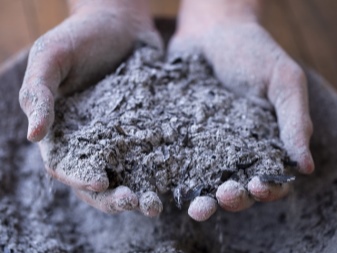
A large number of ready-made fertilizers can be found on sale. Before adding them to the soil, you need to dissolve the dressing in water to the required consistency. When using any of the drugs, it is important to follow the instructions on the package exactly.













The comment was sent successfully.